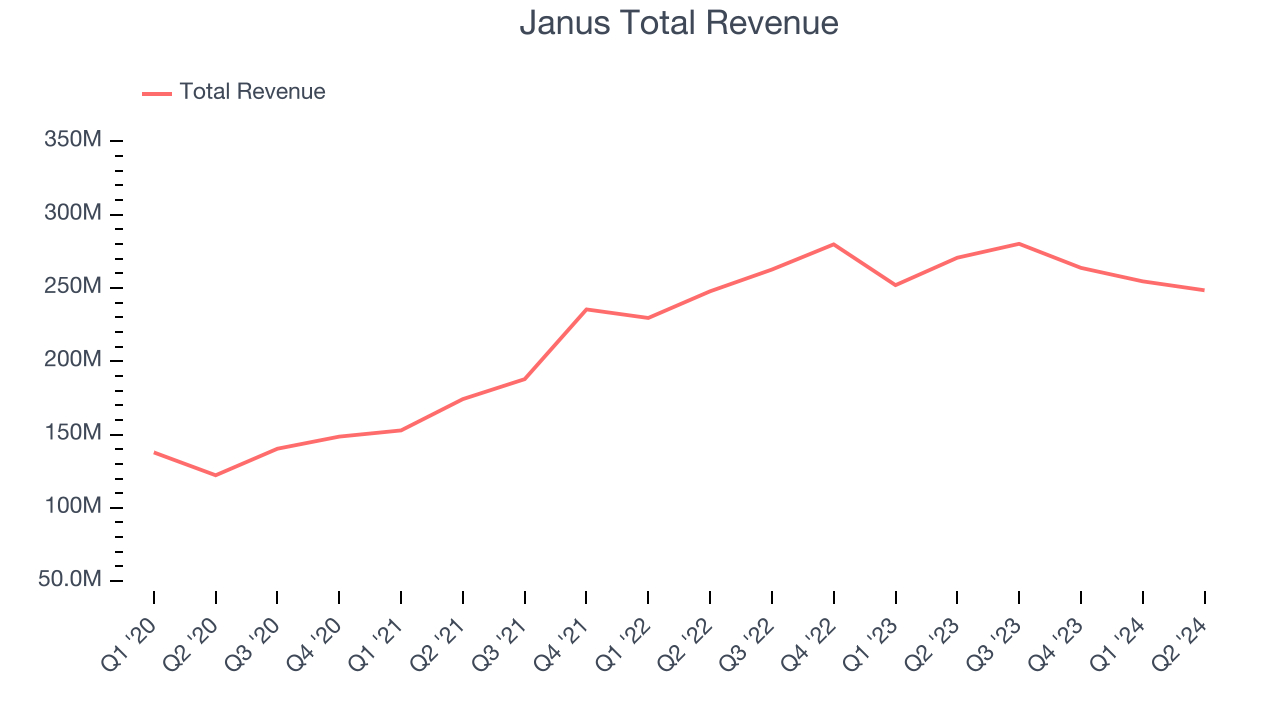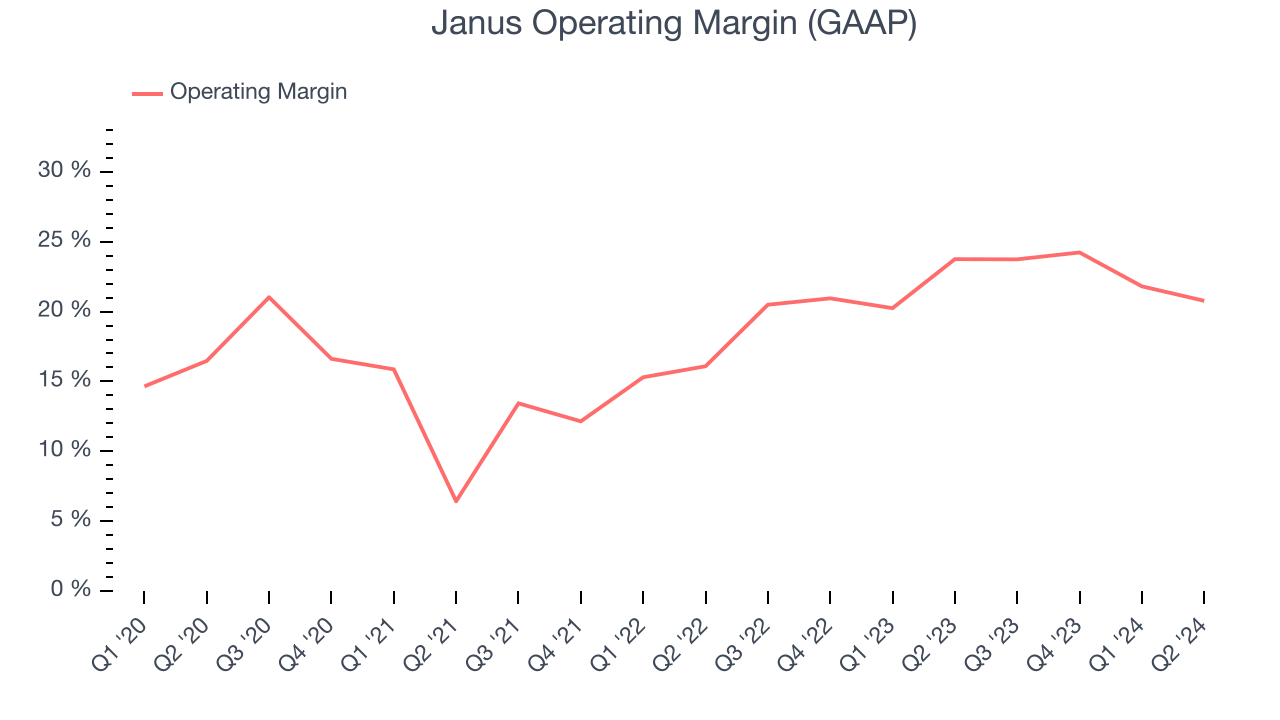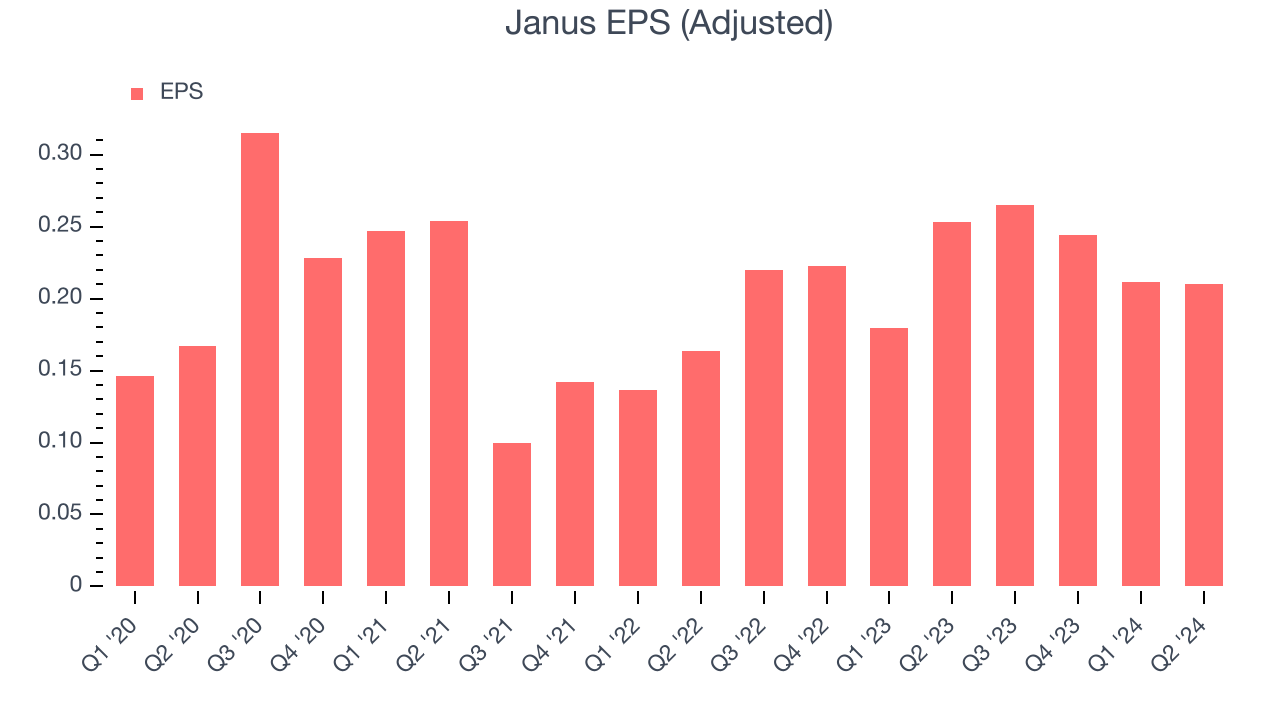Self-storage and building solutions company Janus (NYSE:JBI) missed analysts' expectations in Q2 CY2024, with revenue down 8.2% year on year to $248.4 million. The company's full-year revenue guidance of $1.02 billion at the midpoint also came in 7.7% below analysts' estimates. It made a non-GAAP profit of $0.21 per share, down from its profit of $0.25 per share in the same quarter last year.
Is now the time to buy Janus? Find out in our full research report.
Janus (JBI) Q2 CY2024 Highlights:
- Revenue: $248.4 million vs analyst estimates of $282.4 million (12% miss)
- EPS (non-GAAP): $0.21 vs analyst expectations of $0.27 (23.2% miss)
- The company dropped its revenue guidance for the full year from $1.11 billion to $1.02 billion at the midpoint, a 8% decrease
- EBITDA guidance for the full year is $265 million at the midpoint, below analyst estimates of $298 million
- Gross Margin (GAAP): 43.9%, in line with the same quarter last year
- EBITDA Margin: 26%, down from 27.3% in the same quarter last year
- Free Cash Flow was -$126.4 million, down from $175.7 million in the previous quarter
- Market Capitalization: $1.94 billion
“We delivered solid margin performance in the second quarter despite a sustained high interest rate environment that is driving cautious behavior across our end markets.” said Ramey Jackson, Chief Executive Officer.
Standing out with its digital keyless entry into self-storage room technology, Janus (NYSE:JBI) is a provider of easily accessible self-storage solutions.
Commercial Building Products
Commercial building products companies, which often serve more complicated projects, can supplement their core business with higher-margin installation and consulting services revenues. More recently, advances to address labor availability and job site productivity have spurred innovation. Additionally, companies in the space that can produce more energy-efficient materials have opportunities to take share. However, these companies are at the whim of commercial construction volumes, which tend to be cyclical and can be impacted heavily by economic factors such as interest rates. Additionally, the costs of raw materials can be driven by a myriad of worldwide factors and greatly influence the profitability of commercial building products companies.
Sales Growth
A company’s long-term performance can indicate its business quality. Any business can put up a good quarter or two, but many enduring ones tend to grow for years. Thankfully, Janus's 17.9% annualized revenue growth over the last four years was incredible. This is a great starting point for our analysis because it shows Janus's offerings resonate with customers. 
Long-term growth is the most important, but within industrials, a stretched historical view may miss new industry trends or demand cycles. Janus's annualized revenue growth of 7.8% over the last two years is below its four-year trend, but we still think the results were respectable.
This quarter, Janus missed Wall Street's estimates and reported a rather uninspiring 8.2% year-on-year revenue decline, generating $248.4 million of revenue. Looking ahead, Wall Street expects sales to grow 7.7% over the next 12 months, an acceleration from this quarter.
Here at StockStory, we certainly understand the potential of thematic investing. Diverse winners from Microsoft (MSFT) to Alphabet (GOOG), Coca-Cola (KO) to Monster Beverage (MNST) could all have been identified as promising growth stories with a megatrend driving the growth. So, in that spirit, we’ve identified a relatively under-the-radar profitable growth stock benefitting from the rise of AI, available to you FREE via this link.
Operating Margin
Janus has been a well-oiled machine over the last five years. It demonstrated elite profitability for an industrials business, boasting an average operating margin of 18.6%. This result isn't surprising as its high gross margin gives it a favorable starting point.
Looking at the trend in its profitability, Janus's annual operating margin rose by 5.8 percentage points over the last five years, as its sales growth gave it immense operating leverage.

This quarter, Janus generated an operating profit margin of 20.8%, down 3 percentage points year on year. Since Janus's operating margin decreased more than its gross margin, we can assume the company was recently less efficient because expenses such as sales, marketing, R&D, and administrative overhead increased.
EPS
Analyzing long-term revenue trends tells us about a company's historical growth, but the long-term change in its earnings per share (EPS) points to the profitability of that growth–for example, a company could inflate its sales through excessive spending on advertising and promotions.
Janus's EPS grew at an unimpressive 7.6% compounded annual growth rate over the last four years, lower than its 17.9% annualized revenue growth. However, its operating margin actually expanded during this timeframe, telling us non-fundamental factors affected its ultimate earnings.

Like with revenue, we also analyze EPS over a more recent period because it can give insight into an emerging theme or development for the business. For Janus, its two-year annual EPS growth of 31% was higher than its four-year trend. This acceleration made it one of the faster-growing industrials companies in recent history.
In Q2, Janus reported EPS at $0.21, down from $0.25 in the same quarter last year. This print missed analysts' estimates. Over the next 12 months, Wall Street expects Janus to grow its earnings. Analysts are projecting its EPS of $0.93 in the last year to climb by 12.1% to $1.04.
Key Takeaways from Janus's Q2 Results
We struggled to find many strong positives in these results. Its full-year revenue guidance missed and its EBITDA guidance for the full year fell short of Wall Street's estimates. Overall, this quarter could have been better. The stock traded down 17.2% to $11 immediately following the results.
Janus may have had a tough quarter, but does that actually create an opportunity to invest right now? When making that decision, it's important to consider its valuation, business qualities, as well as what has happened in the latest quarter. We cover that in our actionable full research report which you can read here, it's free.
